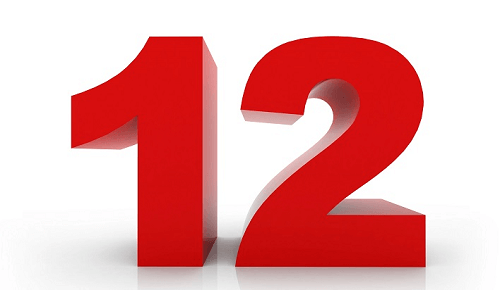Do You Hit on 12 in Blackjack?
Hitting or standing on 12 depends on what the dealer has. For example, if the dealer has upcards of 4, 5 or 6, you need to stand. However, when the dealer has any other cards, then you need to hit. With a total hand of 12, you need to use a slightly different strategy.
In this instance, the dealer holding a 4 through 6 should draw a ten-card but be forced to hit and bust. In the long run, it appears that this is the best move based on a basic blackjack strategy. The other reason you should stand is that you could end up busting with a 22 without having gotten a ten, which is very likely because the same strategy applies to the tens.
Why Should You Hit on a Hard 12?
The odds of the dealer busting will decrease if the player hits on a hard twelve when he has anything else. It’s not a good hand. Having to make a tough choice after getting a hard 12 is something not ideal.

Playing 12 Instead of 4 in Blackjack
With four decks, you receive cards 3 and 9 for a total of 12, while the dealer flips a 4. In essence, it’s either hit the 12 or stand on the hand. Which option are you going to select? In this case, you may be tempted when you have 12. There’s only one card value that can be busted with one hit, a ten-value card (which includes tens and all picture cards).
The final decision, however, is yours to make. It’s 40% likely that the dealer will break when they have an upcard of 4. Therefore, you know 60 percent of the time that standing will result in losing. You will winless in this situation if you always hit the 12 (pushes count for this difference). It’s close. Hitting can almost be as beneficial as standing (if that’s the proper term). Standing here only has a slight edge of about half a percent. You’ll discover that if you go into card counting, you’re going to find that if your negative count is too low (meaning there are more low-value cards leftover than high-value cards), you’re going to hit this hand.
Misplaying a Hard 12 in Blackjack
Hard 12 is striking due to its prominence among the most commonly misplayed hands, despite the basic strategy decisions being among the easiest to learn as they are pretty much the same no matter how many decks and how the dealer stands. Unaware players sometimes make mistakes when playing against a dealer who has exposed a deuce.
We explained that you should hit a hard 12 against a 2. People often choose the opposite move instead of striking a card – they choose to stand instead of hitting. The dealer busts if they have the deuce, but the house has no qualms about outdrawing them with the deuce, right? Additionally, some players follow the “ten in the hole” rule, stating that every dealer’s hole card has a ten-value.
When the dealer flipped a ten next to their deuce, they would double down and go bust. Although the Deux isn’t the most advantageous card for the dealer, it doesn’t put the dealer unfairly in a worse position, as a five or a six would. As we told you earlier, the deuce bust frequency is lower, which makes the odds of winning the 12 difficult, though a little less likely.